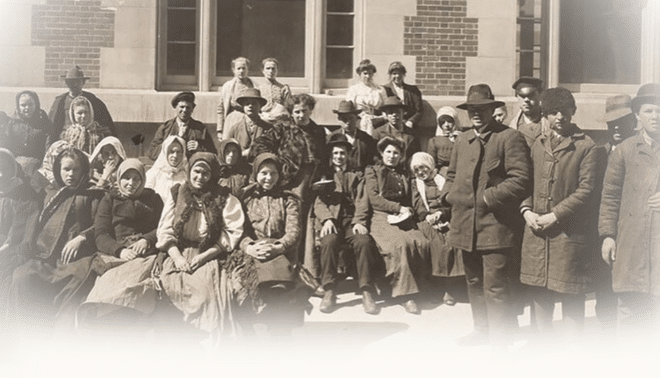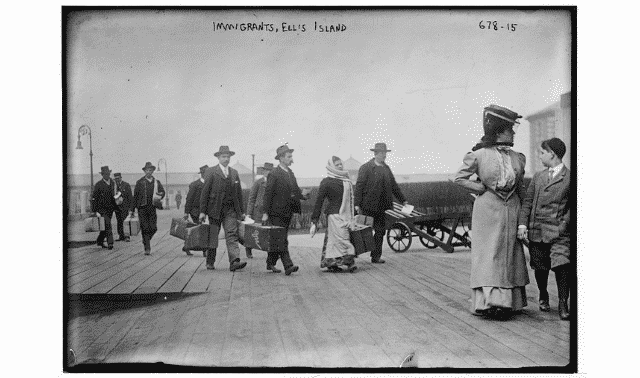Sign up for the Family Tree Newsletter Plus, you’ll receive our 10 Essential Genealogy Research Forms PDF as a special thank you!
Get Your Free Genealogy Forms
"*" indicates required fields
Pre-1820
The federal government didn’t begin keeping a record of immigrant passenger arrivals until 1820, but many pre-1820 passenger lists created by state or local authorities have been published in a multitude of works. P. William Filby and his co-editors provide indexes to some of the passenger arrival information available in a multi-volume reference guide, Passenger and Immigration Lists Index: A Guide to Published Arrival Records of about 500,000 Passengers who Came to the United States and Canada in the 17th, 18th and 19th Centuries, available in libraries. First published in 1981, the guide now has 19 supplements and covers more than 3 million people.
The information in these volumes comes from published sources, not original records. Keep in mind that the date associated with an ancestor’s name may not be the date of arrival, but the date an ancestor was first mentioned in a record as being in America. You must check each volume. The data is part of Ancestry.com ‘s immigration records collection (but not the institutional version, Ancestry Library Edition).
1820 and later
Most original passenger arrival lists from 1820-1957 (with some gaps) have been microfilmed and are available through the National Archives and the Family History Library. The regional records facilities of the National Archives have films for the ports in their jurisdiction. A handy guide, Immigrant and Passenger Arrivals: A Select Catalog of National Archives Microfilm Publications, details more fully the availability of records and indexes for each port. You can access this catalog via the National Archives’ Web site www.nara.gov/publications/microfilm/immigrant/immpass.html, or you should be able to locate a copy at most genealogical libraries. (For more on the National Archives, see our feature on federal government records.)
The information you can glean from these records varies. Passenger lists from 1820 to about 1891 were known as Customs Lists. They were usually printed in the United States, completed by ship company personnel at the port of departure, and maintained primarily for statistical purposes. So their data is scanty: name of the ship and its master, port of embarkation, date and port of arrival, each passenger’s name, sex, age, occupation and nationality.
Arrival records created from about 1891 to the 1950s are referred to as Immigration Passenger Lists. Like Customs Lists, these were printed in the United States, but completed at the port of departure, then filed in the United States after the ship docked. The information provided in Immigration Passenger Lists varied over the decades. As the influx of immigrants became greater, more details were recorded. For example, in 1893, there were 21 columns of information; in 1906, 28; in 1907, 29; and in 1917, 33. All of these details are valuable to your research, but in particular, you can get clues you may not find anywhere else from items such as last residence; final destination in the United States; if going to join a relative, the relative’s name and address; personal description; place of birth; and name and address of closest living relative in the native country.
Subscription site Ancestry.com has digitized available passenger lists for US ports, including available records of immigrants overland from the Mexican and Canadian borders. You may be able to access a version called Ancestry Library Edition at your local library. You can search for passengers who arrived at Ellis Island (between 1892 and 1924) and Castle Garden (from the 1820s until Ellis Island opened) free online. The Immigrant Ships Transcribers Guild is a volunteer-run site with free passenger list transcriptions contributed by other researchers.
Stephen P. Morse’s One-Step Search page has tools for searching the above sites.
Large libraries may have microfilmed passenger lists. They’re also available through the Family History Library or its centers across the country; you can print copies there as well. Or check with a National Archives regional records facility that would have films for its corresponding port, such as NARA’s Northeast Region in New York City for the Port of New York passenger arrival lists.
Prints of microfilmed passenger lists may be obtained by mail from the National Archives for a modest fee, using NATF Form 81. Forms may be requested from the National Archives and Records Administration, Attn: NWCTB, 700 Pennsylvania Ave. NW, Washington, DC 20408. You may also find copies of National Archives request forms at the archives’ regional facilities.) The National Archives will not do research for you, however. The minimum information required for a search of the index is (1) full name of the person, (2) port of arrival and (3) the month and year of arrival. Additional facts, such as the passenger’s age and names of accompanying passengers, are also helpful. If the list is not indexed, more specific information is needed, such as the exact date of arrival and the name of the ship.
ADVERTISEMENT




